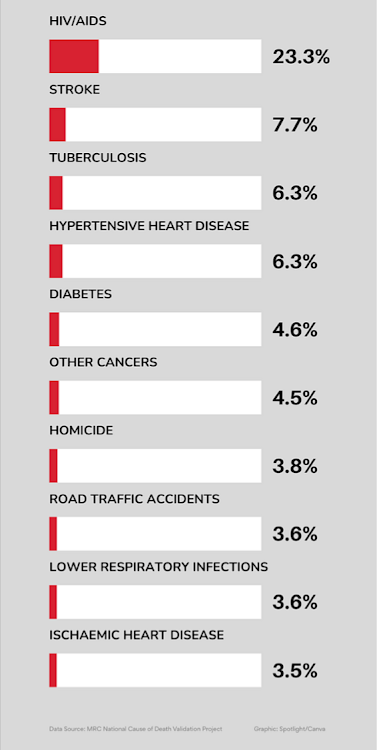Moving away from a paper-based process will reduce the administrative burden and improve efficiency across the system
Several studies have flagged problems with South Africa’s death registration processes. A critical first step to addressing it is to replace our paper-based process with an electronic one, argue Dr Pam Groenewald and Prof Debbie Bradshaw, both of the South African Medical Research Council’s (SAMRC) Burden of Disease Research Unit.
A recent report by the SAMRC highlights the underreporting of HIV in official mortality statistics.
Official cause of death statistics are based on what doctors write on death notification forms. As part of the process of death registration, medical practitioners are required by law to provide information about the medical conditions resulting in each death.
Multiple studies have identified concerns about the quality of the information provided by doctors, and the department of health has been urged in a policy brief to address this, as it clearly undermines the quality of data used by government for health planning and resource allocation.

A recent study found extensive underreporting of HIV as a cause of death. Only 28% of deaths that occurred in a national sample of public sector hospitals where the medical record had clear clinical indications of HIV, had HIV specified on their death notification form.
Aside from ensuring that medical certification of the cause of death is part of the medical training curriculum, and that additional training is provided during internship periods, another key issue to address is that many doctors are reluctant to record HIV/Aids as a cause of death due to concerns about maintaining patient confidentiality. In 2014 a self-sealing section was added to protect information about cause of death on the death notification form, but this has clearly not had the desired effect.
Following the deaths of at least 22 children from contaminated food last year, President Cyril Ramaphosa announced that the department of health would develop an electronic system for recording causes of death as one of several responses to the emergency. The move to an electronic system offers a strategic opportunity to address the challenge around confidentiality and promises far more. It allows for secure, institution-based data management that protects confidentiality, encourages accurate reporting, and strengthens the integrity of vital statistics.
Benefits of this digital transition will include:
- Improved data quality and confidentiality, encouraging accurate reporting of sensitive conditions such as HIV/Aids;
- Automated validation checks, reducing certification errors at the point of data entry;
- Real-time access to mortality data, enabling rapid public health responses; and
- A platform for quality assurance and feedback, currently not possible under the paper-based system.
Ultimately, moving away from a paper-based process of death registration will reduce the administrative burden and improve efficiency across the system. This presents a timely and valuable opportunity to collaborate across departments, including health, home affairs and Statistics South Africa to modernise the country’s civil registration and vital statistics system.
We are at a pivotal moment for such co-ordinated policy action. Investing in a robust electronic system for cause-of-death certification will strengthen South Africa’s public health planning, improve disease surveillance, and increase accountability. The long-term returns — through faster, more reliable data — are substantial for both governance and health outcomes. It is a win-win situation all round.
Article available on Times Live
This article was first published by Spotlight.
Pam Groenewald and Debbie Bradshaw
Groenewald and Bradshaw are both with the South African Medical Research Council’s Burden of Disease Research Unit.

